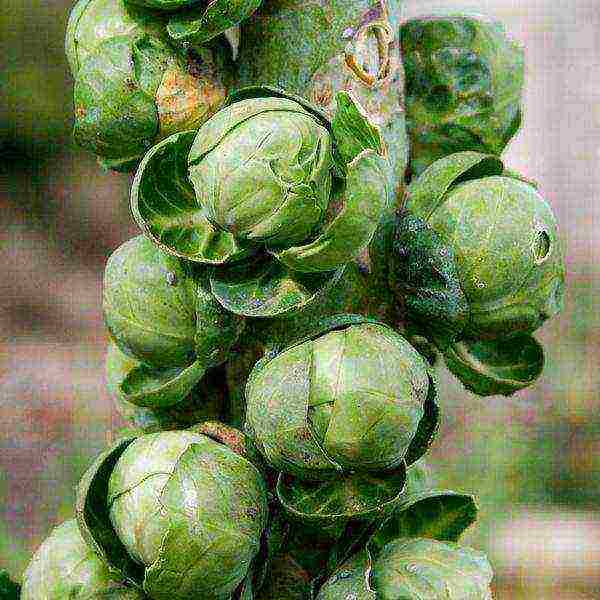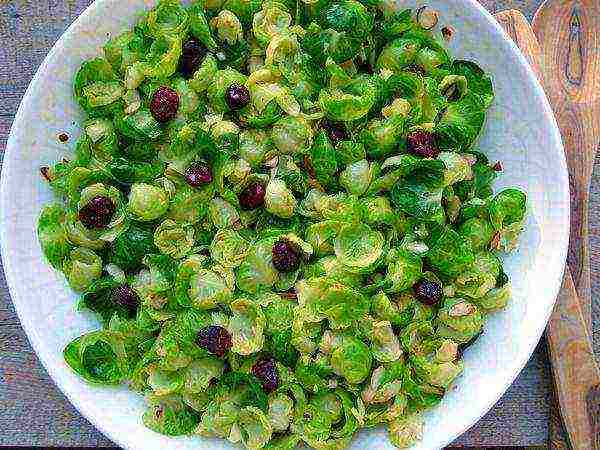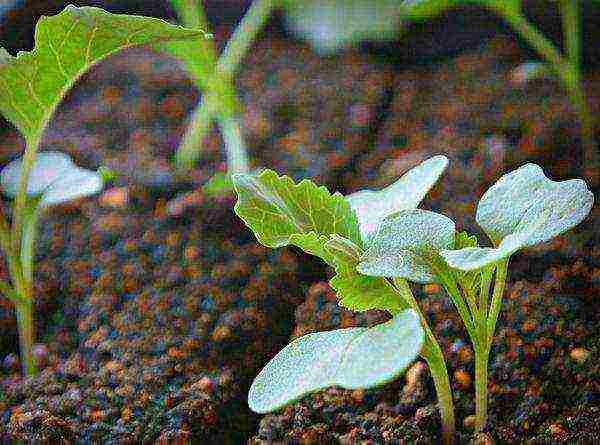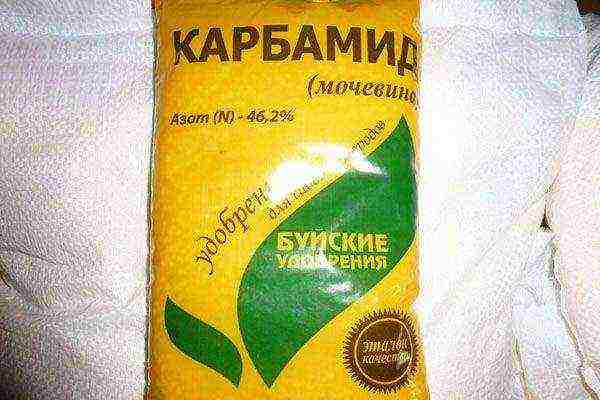Content [show]
Proper cultivation and care of Brussels sprouts
Popular with experienced gardeners, Brussels sprouts are quite simple to grow. Of all the known cabbage varieties, this one stands apart. However, in our gardens, it is considered a rarity due to its peculiar capriciousness and low yield. But this is far from the case.
You can grow a vegetable in a country house in the open field in the Moscow region, plant directly from seeds, or plant seedlings first.
What is Brussels sprouts
The plant is two years old, has a thick stem, reaching a height of one meter. On it there is a long-peaked foliage with a multi-colored bubbly surface. The top of the stem is crowned with a leaf rosette.
By the fall season begin to form small loose or dense heads of cabbage, outwardly resembling white cabbage forks. Their diameter is two to five centimeters, grows on one stem from 30 to 70 pieces.
The plant is unpretentious, frost-resistant, the vegetative period is 4-6 months, so it is recommended to grow the culture using the seedling method.

Origin story
Culture is considered a variety of white cabbage, in the wild in nature does not come across. Its predecessor is kale, which grows in the Mediterranean. The Belgian selection experts brought out the Brussels vegetable, which was the reason for this name.
Over time, the vegetable began to be grown in the countries of Western Europe, and it got to the east in the middle of the nineteenth century, but did not take root due to the difficult climate. But Canadians, Americans and Westerners began to plant crops in industrial quantities.
Beneficial features
This variety of cabbage contains:
- cellulose;
- folic acid;
- proteins;
- vitamins of various groups;
- phosphorus, potassium, magnesium, iodine, sodium salts;
- amino acids.

Cabbage is recommended for diets prescribed for children and the elderly. Perfectly helps with diseases of the cardiovascular system.
Cabbage juice has a diuretic, choleretic, hematopoietic, anticancer, antitoxic, anti-inflammatory effect, stabilizes the working capacity of the pancreas, is recommended for those suffering from diabetes mellitus. Cabbage helps with wound healing after surgery.
Vegetable count gourmet food... It is used in salads, first courses, side dishes, can be pickled and even frozen.
The most popular varieties for cultivation
The most famous are:
- Garnet bracelet... Excellent resistance to cold weather, gives good yields, ripens four months after transplanting seedlings. The stem grows up to seventy centimeters, forms about forty heads of cabbage of a delicate taste;
- Dolmik... A hybrid of Dutch breeders, grows up to fifty centimeters. Heads of cabbage are yellow-green, their weight is about twenty grams. After cooking, they become delicate in taste;
- Boxer... High-yielding hybrid plant, excellent resistance to diseases and harmful parasites. Heads of cabbage are round, green in color, quite tasty;
- Funny company... Medium-sized culture, heads of cabbage are dense and very tasty, purple hue;
- Curl... The best and most productive variety bred in the Czech Republic. The stem height reaches ninety centimeters, forms a large number of five centimeter heads.
- Garnet bracelet
- Boxer
- Funny company
How to grow from seeds
To obtain strong plants, it is recommended to take care of the planting material. For preventive purposes, seeds should soak for 30 minutes in hot water, then cool quickly.
Sowing dates
Sowing is best from mid-March to early April.
Seedling care
After three to five days, the first shoots appear. At this time, you should remove the plastic wrap from the boxes, rearrange them to more illuminated places. To prevent the seedlings from stretching out, it is recommended to organize additional lighting.

Cabbage seedlings need abundant watering, but do not get carried away so that the roots do not start to rot. The soil should be constantly loosento provide oxygen access to the root system.
Feed sprouts follow in the phase of the second - third leaves, using Kemiru-Lux. It is necessary to ensure that the composition does not fall on the leaves. The second feeding is done a couple of weeks before transplanting. Urea, copper sulfate, potassium sulfate, boric acid are used for this.
Picking
It is performed for seedlings that have formed one true leaf. Pick pattern - "Six by six" centimeters... Before transplanting, the seedlings are spilled with a weak manganese solution, then they are carefully seated in cups.
The seedling deepens to cotyledonous leaf... The containers are placed in a shaded place for several days, the air should be humid.
Planting Brussels sprouts outdoors
Transplant seedlings should be after when the sprouts appear fourth - fifth leaves... As a rule, this moment falls on mid-May - mid-summer season.
The soil should be fertile, loamy. The preparation of the beds should be done in the fall - dig it up, add lime if necessary. In the spring, the place should be fertilized by adding a bucket of compost or humus to the square of the plot.
For planting seedlings, holes are prepared, in each of which a small spoonful of urea is laid, two tablespoons - superphosphate, a couple of glasses of wood ash.
The landing pattern is "Sixty by sixty" centimeters... The sprout is waddled along with a clod of earth, sprinkled, compacted and watered.
Care rules
Cabbage should be fertilized urea and potassium chloride... Top dressing with boric acid, molybdenum and manganese solution should be foliar. During the period of the beginning of the formation of the ovary, infused bird droppings are introduced with the addition of ash.

To accelerate the ripening of fruits and increase their weight at the end of the growing season, it is recommended to pinch the apical parts of the shoots. Rosette leaves are cut one month before harvest.
The plant should be spooled carefully so that the lower heads of cabbage do not begin to rot. In this case, weeds should be removed. These are the basic rules for caring.
Diseases and pests
In the spring from the beds it is necessary remove weeds the cruciferous family so as not to attract pests. To scare away cabbage flies, you can sprinkle with tobacco mixed with ash or lime.
Harvesting and storage
In autumn, when the leaves turn yellow and begin to fall off, the heads of cabbage begin to shine characteristically... This suggests that you can start harvesting.
- The characteristic shine of the heads of cabbage is a signal for harvesting
- If you put the heads of cabbage in a bag, they can be stored in the refrigerator for up to 2 months.
The stem is cut off at the surface of the ground, the remaining leaves are removed. If such a stem with heads of cabbage is wrapped in a bag, it can be stored in a cool place for about two months. In frozen form, cabbage lasts up to four months.
It turns out that there is nothing difficult in growing Brussels sprouts. It remains only to choose the most suitable for the climate variety for your region, and you can start sowing, planting this amazing and tasty plant, which will also look unusual.


